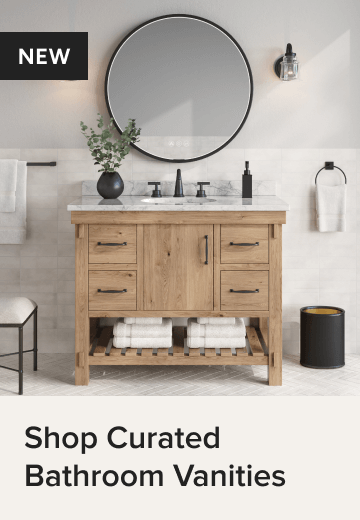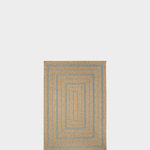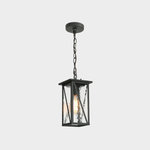How to Paint Perfect Wall Stripes
Draw the line on lackluster walls with crisply painted stripes. Here's the secret to getting them right
Whether they’re horizontal or vertical, stripes are one trend I hope won’t go out of style any time soon. This versatile motif adds visual interest and can help showcase a room’s fine points and de-emphasize flaws.
Use vertical stripes in a room with low ceilings to create the illusion of height, or use wide horizontal stripes in a room with high ceilings to ground the space. Play with the size and color to create a unique look — subtle tone-on-tone stripes of equal size create a subdued and relaxed environment, while bright, contrasting stripes varying in size create a more modern and graphic impact.
Now that I have you ready to bust out your painting supplies, here’s a helpful how-to that will help you paint perfect stripes every time.
Use vertical stripes in a room with low ceilings to create the illusion of height, or use wide horizontal stripes in a room with high ceilings to ground the space. Play with the size and color to create a unique look — subtle tone-on-tone stripes of equal size create a subdued and relaxed environment, while bright, contrasting stripes varying in size create a more modern and graphic impact.
Now that I have you ready to bust out your painting supplies, here’s a helpful how-to that will help you paint perfect stripes every time.
1. Measure and plan. After you've applied the base color, measure the height (for horizontal stripes) or width (for vertical stripes) of your wall so that you can size and space the stripes evenly. Once you have that info, measure and mark each stripe. Use a level to ensure that the lines are straight. I traced lines with pencil over the length of the wall for error-free guides.
I used 12-inch stripes for most of the wall, starting from the center, which left smaller stripes on the top and bottom. To make it easier on myself, I chose to paint the top and bottom stripes white to match the trim.
Note: Take into account any fixtures and features that occupy the wall, such as lighting. You'll want to plan the stripes so the feature will sit inside one of them rather than straddling two.
I used 12-inch stripes for most of the wall, starting from the center, which left smaller stripes on the top and bottom. To make it easier on myself, I chose to paint the top and bottom stripes white to match the trim.
Note: Take into account any fixtures and features that occupy the wall, such as lighting. You'll want to plan the stripes so the feature will sit inside one of them rather than straddling two.
2. Tape off your stripes. After you have chosen the stripes that will be painted, tape them off with painter's tape by running the tape along the top and bottom of the corresponding pencil lines. Repeat the process for any additional stripes. This will create wide and narrow stripes. In this case, you will only be working with the wider stripes.
Run your finger along the edge of the tape to ensure good contact with the wall and remove any air pockets.
Note: For this project, I tested both Frog Tape and Blue Painter's Tape and achieved the same perfect results for each. Think masking tape is a great substitute? Think again. Masking tape can leave a sticky residue and pull the paint off the wall, leaving unsightly bare spots that are difficult to cover.
Run your finger along the edge of the tape to ensure good contact with the wall and remove any air pockets.
Note: For this project, I tested both Frog Tape and Blue Painter's Tape and achieved the same perfect results for each. Think masking tape is a great substitute? Think again. Masking tape can leave a sticky residue and pull the paint off the wall, leaving unsightly bare spots that are difficult to cover.
3. Paint another coat of your base color. With the tape in place, paint a light coat of the base color where the tape and wall meet. Do this for both the top and bottom of where the painted stripes will be. This will create a barrier, preventing the paint you have chosen for the stripes from bleeding under the tape.
4. Paint your stripes. After the protective layer has dried, paint your stripes. Use a small roller to make this process quick. I chose a semigloss white for my stripes.
5. Let the paint dry and remove the tape.
I prefer to remove the tape after the paint has dried for one hour. The paint is dry enough to avoid smudging but still flexible enough not to crack.
I prefer to remove the tape after the paint has dried for one hour. The paint is dry enough to avoid smudging but still flexible enough not to crack.
Stripes aren't just for your walls. Use these same tips to add stripes to other items — floors, rugs, curtains, furniture and bedding (though, as much as I love stripes, I'd probably hold off on painting all of these things in a single room).
More:
DIY: How to Paint a Wall Stencil
14 Designers Show Their Stripes
More:
DIY: How to Paint a Wall Stencil
14 Designers Show Their Stripes



















- Measuring tape
- Painter's tape
- Level
- Paint
To paint perfect stripes, you'll need one base color — either the existing wall color or a new shade — and at least one other color to paint over the top of the base to create the striped effect.This base color has an eggshell sheen. I custom tinted the paint by taking a discounted gallon of powdery blue "oops" paint from my local hardware store and adding a bit of charcoal to achieve a neutral gray-blue.